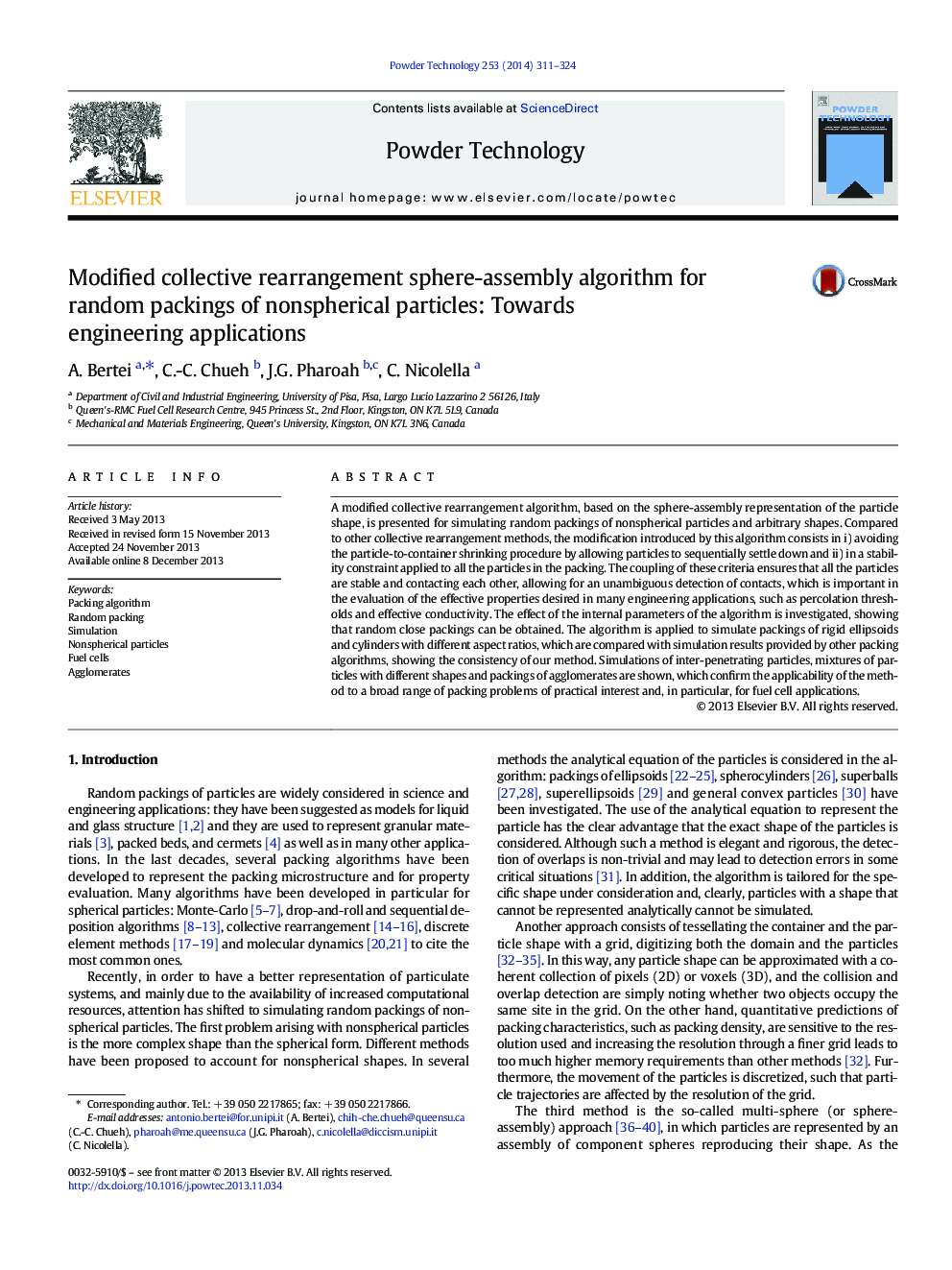| Article ID | Journal | Published Year | Pages | File Type |
|---|---|---|---|---|
| 236466 | Powder Technology | 2014 | 14 Pages |
•Algorithm for random close packings of nonspherical particles and agglomerates.•The stability constraint ensures that all the particles contact each other.•Results for spheres, ellipsoids and cylinders consistent with other algorithms.•Possibility to simulate inter-penetrating particles providing denser packings.•Possibility to simulate multi-component and polydisperse packings.
A modified collective rearrangement algorithm, based on the sphere-assembly representation of the particle shape, is presented for simulating random packings of nonspherical particles and arbitrary shapes. Compared to other collective rearrangement methods, the modification introduced by this algorithm consists in i) avoiding the particle-to-container shrinking procedure by allowing particles to sequentially settle down and ii) in a stability constraint applied to all the particles in the packing. The coupling of these criteria ensures that all the particles are stable and contacting each other, allowing for an unambiguous detection of contacts, which is important in the evaluation of the effective properties desired in many engineering applications, such as percolation thresholds and effective conductivity. The effect of the internal parameters of the algorithm is investigated, showing that random close packings can be obtained. The algorithm is applied to simulate packings of rigid ellipsoids and cylinders with different aspect ratios, which are compared with simulation results provided by other packing algorithms, showing the consistency of our method. Simulations of inter-penetrating particles, mixtures of particles with different shapes and packings of agglomerates are shown, which confirm the applicability of the method to a broad range of packing problems of practical interest and, in particular, for fuel cell applications.
Graphical abstractThe packing algorithm enables the generation of random close packings of nonspherical particles, agglomerates, mixtures of particles, and sintered packings.Figure optionsDownload full-size imageDownload as PowerPoint slide
